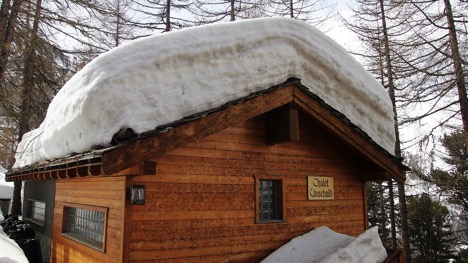By Ross Geller
A roofing system is the most exposed part of a home’s exterior.UV radiation, rain, snow, hail all put a toll on the roofing system’s performance. Early identification and subsequent repair of a roof is an ultimate solution to a long-lasting roof. Often, while preparing for winters, people forget the most critical part of home maintenance, i.e., roof. A roof plays a vital part in keeping your entire home insulated. When you stay in a cold country, roof safety becomes even more crucial. One can’t afford to have a leaky roof. To avoid such a scenario, one should make constant efforts to keep the roof safe and in excellent condition throughout the entire winter season. Here are some vital roof maintenance tips one should consider for a safe winter.
Gutter Inspection:
Gutter or Drains are a significant piece of your home roof and, in this manner, a vital part of setting up your rooftop for winter. Obstructed gutters and accumulated debris can prompt various issues throughout the winter months. Gutters drive the rainwater, melted snow away from your roof. At any point when that process is halted, you could be facing severe damages. One may encounter pooling of water on your roof, which can prompt water damages and leakages to occur inside your home. One should remain cautious during wintertime, as your roof is additionally at danger of ice accumulation.
A large number of these issues can be evaded by cleaning your gutters regularly. Generally, two times per year would be excellent, and one of those occasions would be just before the winter arrives. It is advisable to have an expert roofing contractor for this job, yet with appropriate safety and experience, an individual could also do it.
Tree Trimming:
Debris accumulation is a huge problem when it comes to roof maintenance. This problem worsens when your gutters are cluttered with leaves and branches falling from tall trees. To spare yourself from these additional issues and the probability of drains getting obstructed when the snow hits, it is ideal for dealing with those trees beforehand. During a massive snowstorm, dead trees can fall apart and damage your roof. Thus, to avoid the damages, one should take precautionary steps by cutting any extra bushes around your house.
Roof Flashing Inspection:
Roof flashers direct the path of water from the roof. They are usually installed vertically and made in alignment with the gutter pipe to ease the flow of water. There are various kinds of roof flashing among which one can choose like a valley flashing, step flashing, vent pipe flashing, etc. and one should make sure to install the correct type of flashing as per there home structure and requirements. They are typically installed around chimneys, vents, etc. Roof Flashing is made of solid material like aluminum. Any issues with flashing can cause water damage inside the house.
Before winter hits, one should check all the flashings correctly for any tear, corrosion, etc. A proper inspection will ensure you replace any loose or damaged parts, thus making your roof system even more secure than before.
Roof Shingles Inspection:
Roof Shingles are a roof covering consisting of individual components. It comes in various shapes and sizes and overlaps at joints. They are made of many materials like metal, plastic, slate, etc. Generally, in European countries, ceramic roof shingles are also called roof tiles. With time, these shingles wear and tear and require maintenance and replacement if needed. Problems like loose, missing shingles can cause a big problem during winter times. Visible signs of leaves, debris, twigs are an indication that your shingles require a replacement. On should also consider inspecting sealant between the joints. Therefore, to protect your roof from leaks, algae formation one should call a trusted roofer before the winter season.
Attic Inspection:
A Roof Attic plays a pivotal role in the winter season. The attic, when not inspected correctly, can lead to the creation of ice dams, which in turn can cause substantial water damage to your roof. Improper attic insulation can cause inner home heat to leak from your home and chilling air to seep into your home. It could cause your heating system to use more energy to keep your home heated, which in turn would cause substantial electric bills. Moreover, this lost heat from your home could curl your shingles and form ice dams. Besides this, most attics are used as a spare storage room. If this room becomes overcrowded, then it can lead to blocked attic vents, which can cause poor air exchange ratio. Therefore, before winter arrives, make sure you check your attic for air circulation and proper ventilation.
Conclusion:
To enjoy winter times with your loved ones, one should prepare and inspect the roof in advance. A well-maintained roof would keep your house safe and secure. Being proactive about home maintenance should be a top priority, and one should not hesitate to seek the help of a professional roofing contractor, which has the right tools to keep your roof healthy.
Author’s Bio
Ross Geller Is an Interior Decorator and a passionate writer who loves to write about creating an aesthetic and ambient living environment for everyone. He focuses on sharing ideas and techniques learned from his experience as an Interior Decorator in a concise manner so that it can be used by everyone to make their surroundings beautiful to live in. Currently, He’s working as Roofing Contractor.






